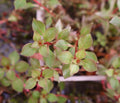How to Cycle Fish Tank
The cycling process that takes place in every fish tank is unknown to many beginning fish keepers. To successfully maintain a tank, this one step is important. Yet, patience is one of the essential steps, and this must be the first trait that every aquascaping enthusiasts should possess.
It can take weeks or even months for a properly cycled tank to get fully-established. The time frame depends on several variables. The good news is that much of the procedure is not that complicated as you migh think; all you need to do is exercise a little patience and periodically test the water in your aquarium.
Why Cycling?
With a large population of good bacteria as a component of the aquarium's biological filter, cycling your fish tank helps eliminate all the poisonous compounds from the ecosystem.
Due to the extremely high levels of toxins, namely ammonia, present in all newly-constructed fish tanks, this is very important and you don’t want to miss this. Without cycling your tank, your fish will experience significant stress, which could result in their death within a few days.
Ammonia will accumulate in your fish tank if you don't cycle it over time. This is what? Fish are toxic to ammonia, so if you keep them around it, they'll get sick and eventually get your aquatic pets killed. In this manual, we'll show you how to perform the two cycling techniques in quickest, safest approach possible.
There Are 2 Ways of Cycling a Tank
1. Cycling with Fishes
This technique only uses a few fish species that are regarded as hardy or novice fish. Guppies, danios, and white clouds, and minnows are some examples. These fish will be the ones to initiate the cycle by producing the ammonia that the bacteria will feed on.
It's crucial to keep your aquarium at a manageable number of fishes—ideally, just one or two to avoid overcrowding. For every 10 gallons of water, maximum of 2 fishes are enough. Do not attempt to add any new fish once you have started because the ammonia in the water will probably make the new fish stressed.
Avoid overfeeding too, since this will simply increase waste production and let ammonia levels rise. Keep in mind that the majority of fish have tiny stomachs.
Fish can also go without food for a few days. Here, a several water change in every few days are essential to help remove some of the ammonia in the tank. A good de-chlorinator can facilitate this procedure to help detoxify some of the ammonia. Please be aware that during this stage of the cycle, fish may become ill or one of them could die.
2. Cycling without Fish
The fishless cycle is the other technique suggested. Instead of using fish to produce ammonia, this cycle employs alternative techniques. That is to put an ammonia inside the aquarium. A little dosage of ammonia can be added to the aquarium every few days or so.
You may daily add fish food to the bare running tanks if you don't have any ammonia on hand. The uneaten fish food in an empty aquarium will later on naturally release ammonia in the water. If given enough time, this might take a little longer but will eventually cycle.
How do I Test my Tank Water?
Tank water tester kit measures these important parameters: Ammonia, pH Level, Nitrites, and Nitrates. These compounds will be kept largely in check with a good mechanical, chemical and biological filter.
Nitrite levels should be in between 0 to 40ppm. Greater than that will definitely cause stress and toxins to the fish. Nitrate levels should be maximum 5 to 10 ppm. Ammonia levels must be zero.
How Do I Know When the Cycle Is Over?
To ensure that ammonia levels don't become too high, aquarium water should be checked once a week or every few days if utilizing the Hardy Fish Method. The cycle is finished when both the ammonia and nitrite readings are 0 ppm.
Ammonia levels will be high at the beginning of the cycle. As the ammonia-eating bacteria move in, ammonia levels will decrease and nitrite levels will rise over time. The nitrite-eating bacteria will colonize the tank after the cycle and reduce the nitrite levels. Nitrate will then appear on the testing kits after that. With a regular schedule of water changes, this may be safely eliminated.
Do Plants Require a Cycled Fish Tank?
The answer is yes and no. Yes, cycling a fish tank is necessary before adding delicate aquatic plants. The reason: Ammonia levels can kill these sensitive plants. This will melt away the plants especially when it is planted on a nutrient-rich substrate which contains high levels of ammonia.
If you are planning to plant hardy plants, you do not necessarily need to perform tank cycling. Such plants as Amazon Sword, Java Fern, Java Moss, Hornwort, and Anubias can be planted without the cycling the tank.
However, the downside of this is that, algae will grow and this will be inevitable for the first-timers. Although these algae such as green dust algae and diatoms are manageable. You can avoid the rise of algae if your tank water is cycled first.
Useful Advice
The cycle process can be accelerated using live plants. Plants will assist in absorbing these substances. Find someone who already owns an aquarium and ask them for some filter media to help your cycle get going.
Additionally, some substrate from their tank is outstanding! It's a widespread myth that the bacteria are kept in aquarium water. While some bacteria can be floating freely in the water. Filter, substrate, hardscape decor, and plants are utilized to house the overwhelming number of colonies.
Conclusion
In a nutshell, during a full cycling process, the water's pollutants begin as harmful ammonia, change to poisonous nitrite, and then finally get digested to produce toxic nitrate (non-toxic).
This is only a general guide to caring for fish. This is not a comprehensive manual that everyone must follow. Do what you believe is best for your aquatic pets and conduct more research if needed.
















